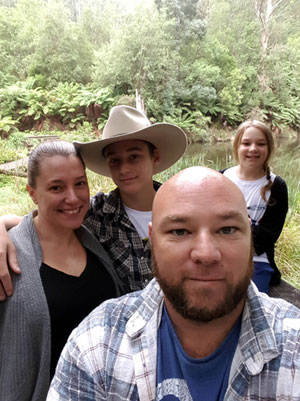
I am a seriously injured worker. If you were a case manager in a personal injury scheme you would ‘classify’ me as total a 47 per cent whole person impairment. I was injured in 2007—at least that's what the paperwork states. In fact, that's not who I am at all.
I am Peter Wilson, a person just like you, and I would love to share my journey over the past 10 years with the world. This journey isn't easy to share but I am here and I want to share it with you..
I don't claim nor want to be a voice for others, I simply want to share my journey in the hope it will inspire others to find theirs to offer people an untainted, unedited version of what my life has been and is for someone like me.
In March 2007, I was at work. A decision was made to, in part of closing up, take my motorbike around the block, which I lost control of. I slid across Hampstead Road, which most of you would be familiar with, it's a well-known road here in Adelaide.
This particular day this incident happened, I don't remember the exact circumstances of how it happened except for the witness statements which said my motorbike lost control, I slid across Hampstead Road, a semitrailer that was northbound locked e-brakes, which is what the witnesses saw standing on the corner. They heard the truck lock its brakes. They heard a bang. They had assumed the truck had run over me, but what had happened was that on the outside of the truck there was a car, and the car had run over me.
I remember waking up on the road and I couldn't move, and I knew things were pretty serious. At that point, they had me covered over with blankets. When the ambulances arrived, I remember them cutting parts of my clothes off and witnesses around me saying, 'Is that his stomach on the road?'—which it was. I was carted to the Royal Adelaide Hospital. My wife was called by my employer via my mother-in-law, who met the ambulance at the Royal Adelaide Hospital.
I remember being treated through that emergency department and being spoken to by Professor Anthony Pohl, who was the head of orthopedics and him explaining to my wife that she needed to say goodbye. I remember holding her hand and saying goodbye. (Below is a photo of Pete and his wife much further down this road....)
The next day I woke up in, I guess, a high-intensity recovery room. There were a couple of nurses right alongside me and I'm thinking to myself, 'Well, at least I'm alive.' I still couldn't move or feel much, but I thought, 'Well, I'm alive.' My children, aged 18 months and five at that time, then entered the room and they said goodbye. Thereafter, for about the next two weeks, every family member I can think of, from all over Australia, 15 minutes at a time, came to say goodbye. It was a pretty bad situation. I don't think I ever really gave it much thought about how bad it was.
Two weeks later they spoke to me about the fact I had now passed that critical point. So, with the actual injuries, by this stage I still didn't quite know what my injuries were, but they started explaining why it was so serious. When the car ran over me it broke my pelvis in the middle and basically my pelvis bones were pointing forwards, but mainly my right one had pretty much been torn off from the sacroiliac joint at the back. If you think about it, a pelvic ring is like that, your spine joins here and it is cartilage at the front. It broke in the middle and this right-hand side was out like that, which tore me from my groin to my anus from the inside out—which is why I had stomach on the road. It pretty much popped me from the inside out.
Once I came to terms with what I had been through there they explained to me that I may never walk again and, if I did walk, I would be 'severely crippled', in their terms. Obviously, I am a person who never gives up. I never gave up in the beginning and I didn't give up through that.
It took me about 12 months to walk again to the point you see today. I was upright, at least, in 12 months. At that stage I still had a colostomy bag—which, again, it was discussed about it not ever being reversed. I went back to work just around 12 months; myself, I pushed for it. Because at that stage I could be at work, but I couldn't do the roles, the tasks that were required and that a small business could support, so we separated.
(Editors note: what followed was years and years of struggling with SA Workcover, insurance companies and case manager after case manager all of whom were unable to truly look beyond the paper and understand Pete's situation, leading to serious mental health issues which Pete had to work through pretty much alone)
I then had the opportunity to invest in a business venture which did not work out and as a result I lost most of my life's savings....I was then determined to work again to save some of the lost savings, I had pretty much destroyed my family in those years because I had worked so hard. I felt that I was pretty much a burden on everybody. It was touch and go at that time as to whether or not I could carry on with life. But I did!
So, I thought about what it was that I wanted to do next. I didn't see becoming a seriously injured worker as a golden ticket but as an opportunity at the right time, that I was ready to move on with my life and that I could do something else. I had no idea what it was going to be. I started to come up with the concepts for the fact that I hadn't been through this and all the other things I have been through in my life, experienced those horrific things that I have experienced for no reason. They can't have meant nothing and they can't have happened for no reason.
I started to think about what it was that I did want to do, and I really felt an overwhelming urge to share my experiences in the hope that it might inspire or help other people to make the right decisions for them.
I thought, 'Well how else can I do that?' And I thought about other things that I enjoyed. I love scuba diving—I love scuba diving. Scuba diving for me was a release from the real world, and if you speak to most scuba divers they will tell you the same thing; that's why they do it.
I thought about ways that I might be able to combine my passion for scuba with my desire to help people. I thought about all the benefits that scuba had given me and also the experiences that I had had and how that could share or translate to others, and I thought, 'I wonder if I could volunteer with something like that?' I looked around the world, and there was nothing. There was nothing in the world that had taken scuba and used it in a different format.
So, I thought, 'Well, if no-one has done it, I might as well have a crack.' and that's what I started planning.
Editors Note:
Pete is now the successful business owner of Determined2 an award winning provider of Immersion therapy. In 2016, Determined2 and Peter Wilson were the joint winners of the Excellence in Inclusive Service Delivery Award at the 10th National Disability Awards. Reference was recently made to the work Pete does in the SA Parliament as follows:
In 2007, Mr Wilson was seriously injured in a motorcycle accident, leaving him with a significant impairment. After an extensive recovery period, Mr Wilson became involved in recreational scuba diving. This experience led him to consider the therapeutic benefits of weightlessness and in 2015 he established Determined2. Mr Wilson is managing director of Determined2. The Determined2 immersion therapy program provides people with disability, injury or a medical condition with the therapeutic benefits of being weightless and enjoying a variety of exciting activities in the familiar environment of their local pool.
The reported benefits of weightlessness for people with injuries or illness include improved freedom of movement, an opportunity to explore their capabilities in a safe environment and a sense of confidence and achievement. The immersion therapy program is the only service of its kind in Australia and we are proud that it is a South Australian initiative. I am sure on behalf of everyone, but on behalf of myself I congratulate Mr Wilson on this award and applaud him for his ongoing work and contribution to a more inclusive South Australia. (if you would like to refer to SA Parliament Hansard for more details)
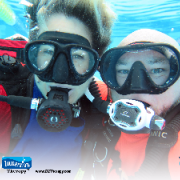 Determined2 it is an approved service to the following funders:
Determined2 it is an approved service to the following funders:
- Return to Work SA
- Employers Mutual
- NDIS
- Gallagher Bassett
- Lifetime Support Authority (LSA)
- Disability SA
- National Disability Insurance Scheme
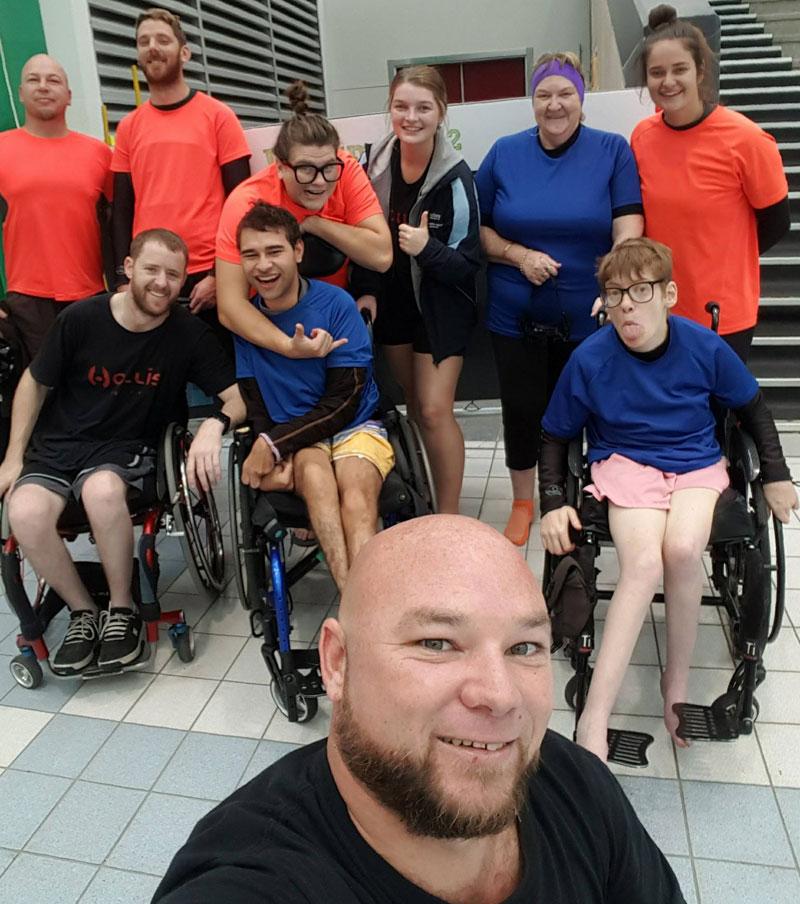
 I am a seriously injured worker. If you were a case manager in a personal injury scheme you would ‘classify’ me as total a 47 per cent whole person impairment. I was injured in 2007—at least that's what the paperwork states. In fact, that's not who I am at all.
I am a seriously injured worker. If you were a case manager in a personal injury scheme you would ‘classify’ me as total a 47 per cent whole person impairment. I was injured in 2007—at least that's what the paperwork states. In fact, that's not who I am at all. 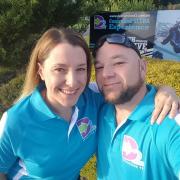
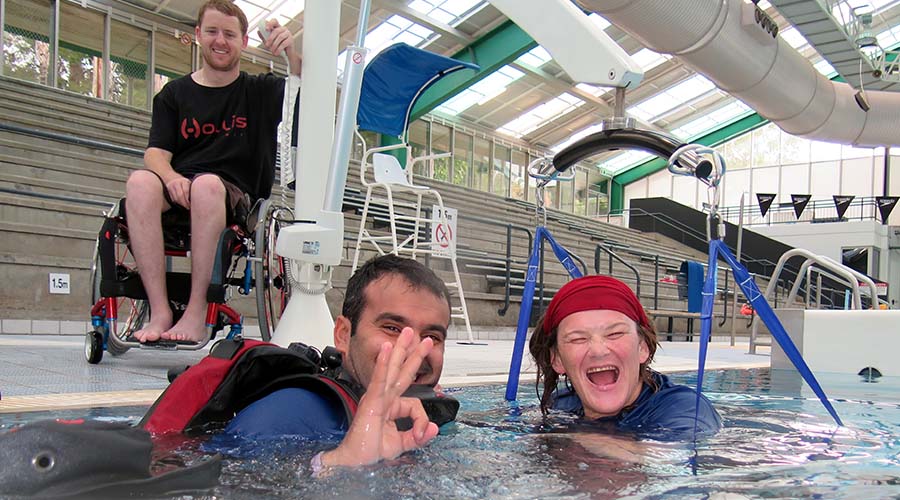
 Determined2 it is an approved service to the following funders:
Determined2 it is an approved service to the following funders:


